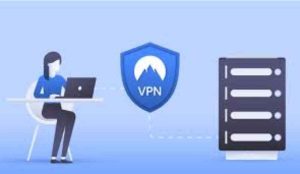6 Ways to Effectively Communicate with Your Customers

Communication between a customer and the company that is providing their services is integral for the success of both parties. Businesses must maintain good contact to better respond to potential problems and inform customers about updates or changes. On the other hand, customers want to be heard at all times and want businesses to consider any feedback they have about the product or service.
Effective communication is a two-way channel that allows businesses to interact with customers and vice versa. It entails appropriate verbal and nonverbal communication. It is the most effective way to create a bond between a company and the customer. This bond often allows customers to develop loyalty towards their business or product, making them feel more confident in their ability to provide quality products or services. Choose an effective communication method depending on several factors, including accessibility, speed of delivery, and price.
Table of Contents
1. Social Media
Social media sites like Facebook, Instagram, LinkedIn, and Twitter are valuable resources for businesses and customers. They allow companies to contact many people in minutes and update them on any changes or offers. These sites also allow customers to reach out to businesses to convey any problems or questions. Social media can also generate a sense of community. It allows for more customer engagement and fosters stronger relationships
Start by setting up your business page on all popular social media sites. Regularly post updates that let customers know what is happening within the business and any changes or updates in the service. Include things like pictures of new products, information about new employees, updates on the status of an order, etc. Research the various sites to determine which are most appropriate for your needs and what content you need to post.
Your social media strategy should be a part of your overall marketing strategy. It will ensure that your social media activities contribute to your overall business goals and help you determine how to use these sites most effectively and efficiently. Your Facebook page can also include a link to social media sites like Twitter or Instagram and an e-mail address or phone number.
2. Newsletters
Newsletters are a great way to contact existing customers, introduce new products and services, or provide information regarding upcoming events. They are easy to create and inexpensive to send out. You can customize them in different ways depending on the content. First, consider the purpose of your newsletter. Choose a layout that best fits your goals. If you are introducing a new product, choose an image that showcases the benefits of using the product. If you have an event, include information about the event and an invitation for customers to register. Consider including news about environmental issues, relevant legislation, or other hot topics relevant to your target audience.
Your newsletter should include an introduction, a quick overview of your business, a description of what you do, how your customers can reach you by phone or e-mail, any promotions you are currently running, and any upcoming events. You can also include reminders of previous promotions or special offers. Send out your newsletters at least once per month. Include a contact e-mail address for questions or to give feedback. Use this information to make any changes to your mailing list so that no one is left out.
To encourage people to stay subscribed to your newsletter, you can include a question or survey in each one. Depending on the type of business you are running and what kind of information people want to receive, you may want to include age, gender, and interests in your questionnaire. It will help direct your e-mails to interested people and give them a better experience using the newsletter.
3. Text Messages
Text messages work well to communicate with customers who are always on the go. Texting works especially well if you have a customer service line where people can call in with questions. You can have your phone number on the website, in the newsletter, on business cards, and even in your advertisements.
Text messages can be used to send out company updates and offers. They should be written in a personal style that is more likely to make the customer feel comfortable. It is especially important when responding to negative comments or questions. By being sensitive to customers’ needs, you can create a good relationship with them and be well-positioned for when they need your services again.
SMS software can make the process of sending text messages much easier. This software will help you get your messages sent faster, track the responses, and organize your contacts. You can easily manage your customer messages in one place. The system can also be modified to suit your needs. When choosing text message software, look for something that has many features and is easy to use simultaneously. The tool should be reliable enough to deal with hundreds of messages daily.
4. E-mails
E-mail works well for customers who are more comfortable working online. It is also a good choice if customers want information in a very specific format or are concerned with the level of personal contact they want to feel from a particular business. You can e-mail potential customers with information about your products or services and use it to get feedback. You can also use e-mails to keep loyal customers updated on the progress of their orders.
When sending out e-mails, try to make them feel more personal so that your customers will be more likely to respond. Use first names instead of business titles. Use a conversational tone when writing. Include personal details in your e-mail, such as your interests and where you have attended school or worked. If you are sending out messages on behalf of your company, try to make the e-mails appear more official by including a logo or the title and name of the person sending them out.
Try to ask open-ended questions rather than yes or no questions. This way, you can get more detailed feedback from your customers. You can also ask them to include their contact information so that you can reach them when necessary. It can be a good way to find new potential customers or stay in touch with existing clients for long-term promotional benefits. Keep your e-mails short and concise to make them easier to read and respond to. E-mail marketing software is a good way of simplifying this process.
5. Phone Calls
Some people are more likely to respond to a phone call. It is especially true for less computer-savvy customers who want something straight from the source. It is also a good way to keep in touch with regular customers who may need a special service. You can call customers to offer special deals or ask if they want to come for a coffee. You can also ask previous customers if they would like to participate in a survey or simply give you some feedback on the services you supplied.
If you are making a phone call, try to speak in a friendly tone. Avoid being too formal and ask for permission to call before you dial. Make sure you have an easy-to-understand script so that you will sound more professional when talking with customers. Keep track of your calls and note the results or feedback customers provide. Use the results to shape future communications.
Phone calls provide a level of personal contact that customers love and are used to when interacting with their friends and family. They are often effective at getting information out of customers and improving the trust between parties. Your customer service skills will play a large role in whether or not your customers feel comfortable interacting with you over the phone. Ensure you have a supply of business cards to give out to your customers so they can reach out to you anytime.
6. Events
The best way for small businesses to gain exposure is through physical events. Customers like being able to experience products and services at the source. They want to feel as though they are getting personal attention from the business owner or representative. They also want to get a feel for how the brand operates, the general attitude, and the level of professionalism of those in charge.
The best way to get customers is to demonstrate the products in areas where customers can interact with them. Small businesses can hold meetings at their location. Bring out sample products and have them on display so that people can see exactly what they are buying or what kind of impact your brand is trying to make.
You can also host events at major malls, retail centers, schools, or sporting events. Bring out a display booth or table where people can talk to the representative and look at the products in person. These events are the best way to gain brand exposure if you are trying to tap into a very specific niche market.
Also Read: Career Opportunities in Corporate Communications
Conclusion
In today’s competitive business environment, your business must stand out. Effective communication is the key to making this possible. Your business’s customer service skills will directly impact your customers’ trust in you and whether or not they will choose you over competitors. Use these methods individually or utilize them together depending on your needs and goals.





